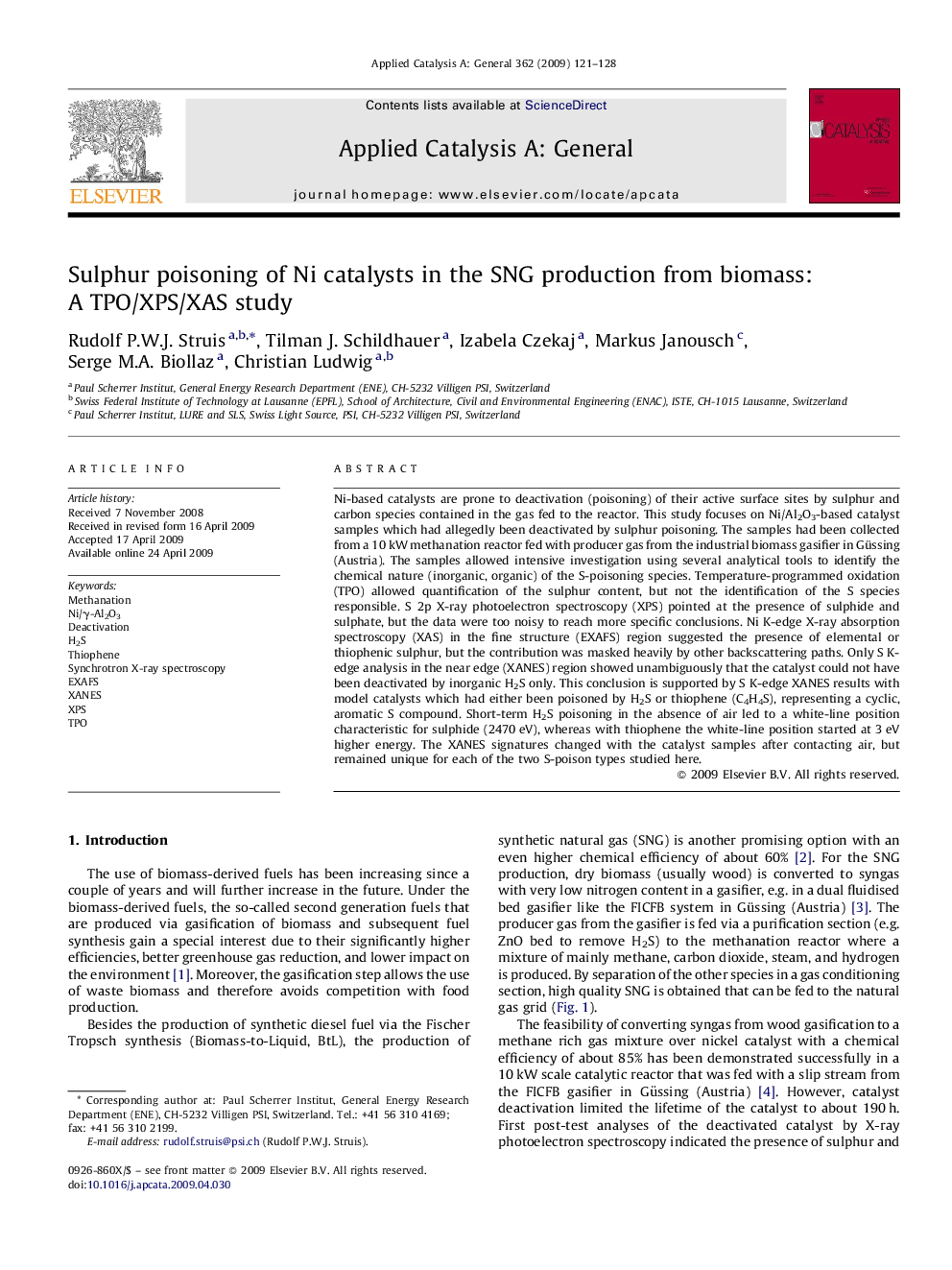| Article ID | Journal | Published Year | Pages | File Type |
|---|---|---|---|---|
| 42696 | Applied Catalysis A: General | 2009 | 8 Pages |
Ni-based catalysts are prone to deactivation (poisoning) of their active surface sites by sulphur and carbon species contained in the gas fed to the reactor. This study focuses on Ni/Al2O3-based catalyst samples which had allegedly been deactivated by sulphur poisoning. The samples had been collected from a 10 kW methanation reactor fed with producer gas from the industrial biomass gasifier in Güssing (Austria). The samples allowed intensive investigation using several analytical tools to identify the chemical nature (inorganic, organic) of the S-poisoning species. Temperature-programmed oxidation (TPO) allowed quantification of the sulphur content, but not the identification of the S species responsible. S 2p X-ray photoelectron spectroscopy (XPS) pointed at the presence of sulphide and sulphate, but the data were too noisy to reach more specific conclusions. Ni K-edge X-ray absorption spectroscopy (XAS) in the fine structure (EXAFS) region suggested the presence of elemental or thiophenic sulphur, but the contribution was masked heavily by other backscattering paths. Only S K-edge analysis in the near edge (XANES) region showed unambiguously that the catalyst could not have been deactivated by inorganic H2S only. This conclusion is supported by S K-edge XANES results with model catalysts which had either been poisoned by H2S or thiophene (C4H4S), representing a cyclic, aromatic S compound. Short-term H2S poisoning in the absence of air led to a white-line position characteristic for sulphide (2470 eV), whereas with thiophene the white-line position started at 3 eV higher energy. The XANES signatures changed with the catalyst samples after contacting air, but remained unique for each of the two S-poison types studied here.
Graphical abstractNi/Al2O3 catalysts allegedly poisoned by sulphur during methanation of biomass-based producer gas were analyzed to elucidate the chemical nature of the S-poisoning species. Among other techniques (TPO, S 2p XPS, Ni K-edge XAS), only S K-edge analysis in the near edge (XANES) region provided clear, unique S-electron-state fingerprints showing that the catalyst had been poisoned by organic S like thiophene (C4H4S) and not by H2S.Figure optionsDownload full-size imageDownload as PowerPoint slide
